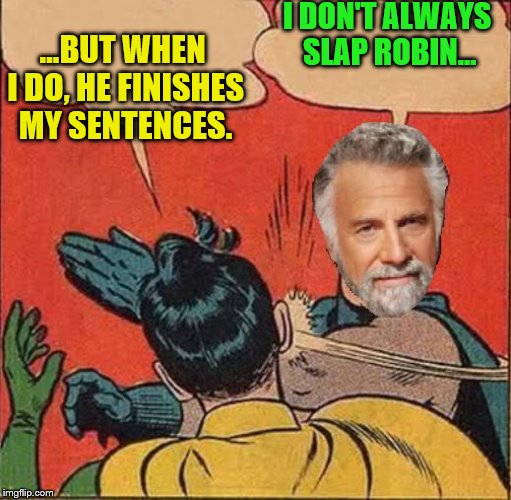
Just as for a referee or an umpire in sport, the highest accolade for a translator is when the audience didn’t even notice they were there. To re-iterate, the ultimate goal is to produce text that reads like an original-not a translation. Naturally, feedback from clients should also be taken on board (subject to their ability to assess how well your translation plays with the target audience). A native Japanese speaker (with a good command of English) should be able to point out errors in meaning and missed nuance a fellow English speaker with advanced writing skills (but not necessarily any Japanese ability) will be able to point out stylistic inconsistencies and lapses.
#SENTENCE FOR SLAPDASH HOW TO#
The author of the source document may own the original, but is rarely qualified to tell the translator how to express the same meaning in English.Īnother useful exercise is to have your work reviewed by others. In short, be creative and make bold, independent decisions.

Combine short sentences into one English sentence.Split long sentences into two or more English sentences.Depart radically from the order of the Japanese sentence.In order to produce natural-sounding English output, don’t be afraid to do the following when necessary: Its factual jurisprudence is slapdash, sloppy, and, too often, supercilious. The surfaces are lumpy and clotted, linty with escaping threads, amusingly slapdash. The author of the source document … is rarely qualified to tell the translator how to express the same meaning in English. The slapdash concrete panel wall runs east-to-west along the 50-foot long border of our back garden. Don’t lose heart, ‘though-with experience and perseverance, the translation process does become easier!īe creative and make bold, independent decisions. The serious translator needs to develop their English writing skills as much as possible, and to avoid compromising and producing slapdash writing just to get the job out of the door. Thus, it is not uncommon to hear an aspiring J-to-E translator say: “I understand exactly what the Japanese text means-I just don’t know how to put it into natural English”. Japanese and English have completely different grammatical formations, sentence structures and writing conventions. But this procedure in itself is not sufficient, because, although it would be highly probable that a gas obeying Boyles law at all temperatures was practically an ideal gas, it is evident that Boyles law would be satisfied by any substance having the characteristic equation pv f (0), where f (0) is any arbitrary function of 0, and that the scale of temperatures given by such a substance.

Therefore, we are not responsible for their. This is significantly harder to achieve when translating into English from Japanese than from a closely related European language (such as French or Spanish). Context examples for slapdash in Spanish() These sentences come from external sources & may not be accurate. To meet a really high standard of quality, a translation needs to fulfill the following two criteria: it should (a) accurately capture the meaning of the source text, and (b) read smoothly-just as if it had been originally written in the target language.


 0 kommentar(er)
0 kommentar(er)
